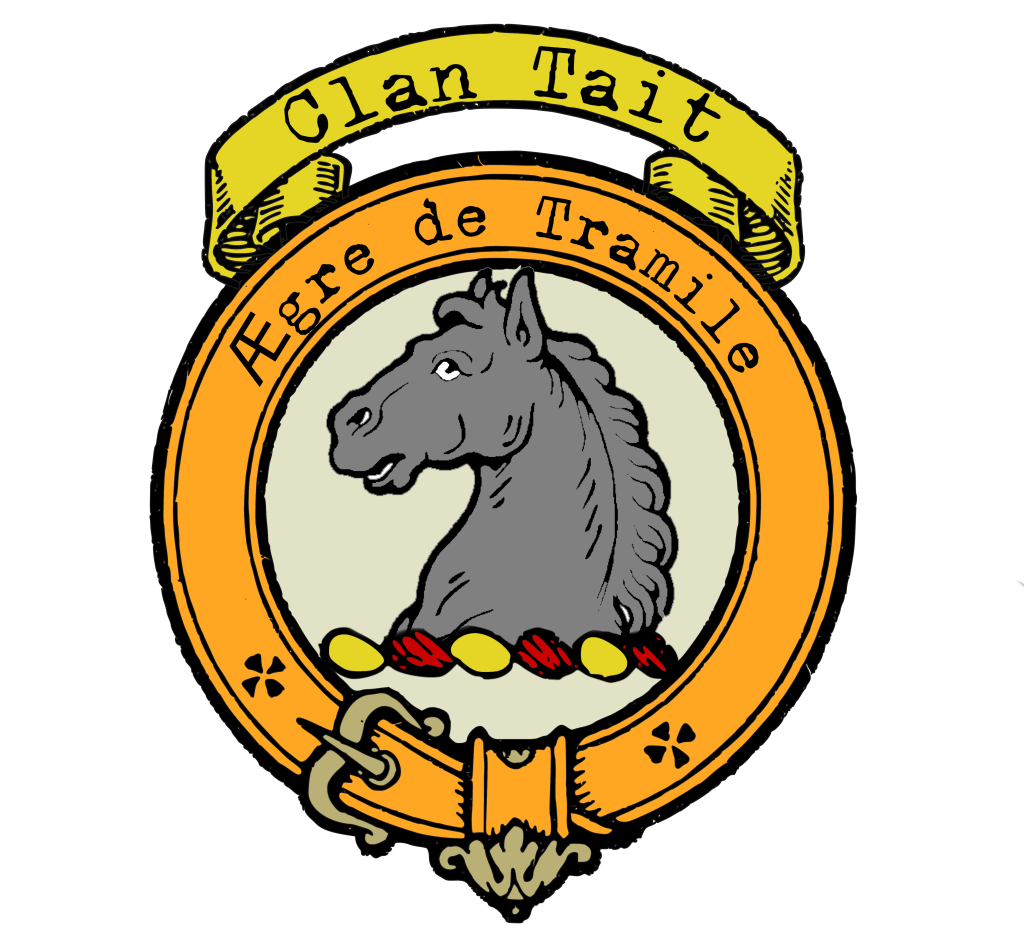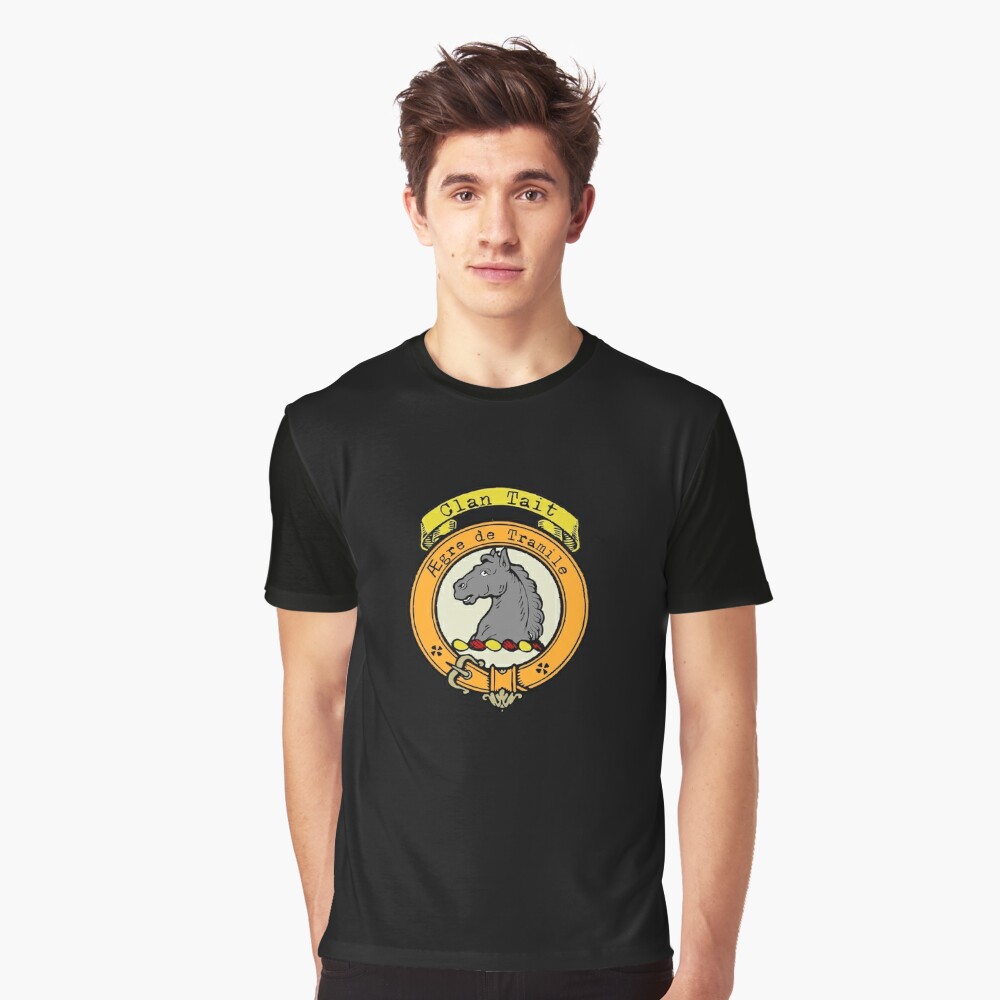Clan Tait
|
|
CREST: A horse’s head coupled sable MOTTO: Ægre de Tramile TRANSLATION: difficulty of tramile VARIATIONS: N/A |
| The name Tait is believed to have its roots in Norse-Viking ancestry, deriving from the Old Norse word “teitr,” which means “glad” or “cheerful.” As it often happens with family names, Tait evolved over time, preserving the essence of its original meaning. The clan’s enduring optimism is perhaps a testament to its ancient Norse beginnings.
One of the most intriguing chapters in the Clan Tait’s history is its close association with Innerleithen, a picturesque town in the Scottish Borders. Innerleithen’s beautiful landscape has been inhabited since pre-Roman times, and its rich history played a pivotal role in shaping the clan’s identity. According to local legends, the town was founded by a wandering pilgrim monk named St. Ronin in A.D. 737. St. Ronin’s story, including his legendary encounter with the devil, is woven into the fabric of Innerleithen’s folklore. The town’s St. Ronans Borders Games, Scotland’s oldest organized sports meeting dating back to 1827, continues to celebrate these traditions and remains a vibrant part of the local culture. While the Tait clan’s origins are steeped in Norse mythology and early Scottish history, it wasn’t until the Industrial Revolution that the clan truly came into prominence. Innerleithen became a center for wool milling, and the clan’s presence grew in the region. This economic boom led to population growth, marking the ascendancy of Innerleithen over neighboring Traquair. One notable chapter in the clan’s history involves its connection to the Horsburgh family. Through marriage and inheritance, the Tait clan’s influence extended, and the Tait arms were quartered with the Horsburgh arms, symbolizing the merging of these two historic families. Heraldry plays a significant role in Scottish clan history, and the Tait clan is no exception. The Tait of Pirn arms are of particular note, having been recorded in numerous pre-register armorials, indicating their prominence. One of the most recent sets of Tait arms registered with the Lord Lyon is that of Thomas Tait of Kirkintilloch. The arms feature a saltire engrailed in red on a silver background, a crest depicting a Bengal cat, and a motto that reads, “CURAE EST SENTIRE” (I feel, therefore I care). |
|
Citations:
|
|
Purchase @ Redbubble
Purchase @ Amazon.com
Purchase @ Amazon.co.uk

